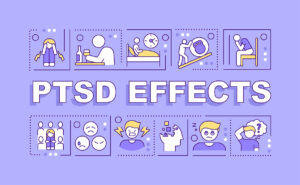Related Resources
For Understanding Trauma
An Intro to Self-Havening with CPR for the Amygdala Practice
CPR for the Amygdala, which utilizes the Havening Touch plus Cognitive Distractions, is a powerful tool for decreasing stress and anxiety rapidly. Join Dr. Kate Truitt to learn how to welcome this powerful tool into your life today!
To start the exercise, Dr. Kate Truitt helps us release anything that has been coming into our mind subconsciously. She then asks us to welcome in havening touch and soothing breath.
Then she asks us to look back and find an experience that has been causing us stress. Once it’s been identified, she leads us to notice all of the sensory aspects of this experience. On a level of 1 to 10, she asks us to evaluate how stressful we rank this experience. After we do this, she guides us through a series of mindful breaths alongside our havening touch.
Once this is done, she asks us to reevaluate how stressful we rank this experience. If it’s still bothering us, she guides us through another round of the exercise. This exercise can be repeated as many times as it takes for us to release the stress surrounding an experience, and it can be repeated for different experiences as well.
How the Amygdala Designs Our Days - Understanding the Survival Brain
In this psychoeducational video, Dr. Kate Truitt walks us through the brain’s information processing system and how Amy the amygdala impacts our day-to-day lives. When something happens in our environment, our brain registers this, and that data goes up to our thalamus. Our thalamus is one of the rare brain parts that communicates with all of our brain all of the time.
This information is sent out, and the Amy is consulted because she processes all emotional data and is involved in survival and thrive functioning. If this information is a threat, she will help us to stay safe, but if it isn’t a threat then she will consult the hippocampus. The hippocampus is the narrative component of the brain, so Amy asks how we feel about this person, object, experience, etc. The working memory is the google search of the brain, so it will dig up related data.
From there, the anterior cingulate cortex will spotlight which data points matter. Much later than the other parts of the brain, the prefrontal cortex, or our thinking brain, will start participating in the conversation. If the experience is going well, our brain hums along and continues on with our life.
Understanding Trauma (YouTube Playlist)
Dr. Kate Truitt begins by introducing this 37-episode series, where she covers the intricacies of trauma, such as post-traumatic stress injury and complex trauma. This includes addressing questions such as why do some people have PTSD and others don’t, how many adverse childhood experiences do we have and what trauma does to the brain and body.
In this series, we dig deep into how to go from being survivors to becoming thrivers, or learning how to “Phoenix up.” This means taking the experiences of our past and turning them into personal empowerment. The story of the phoenix illustrates a fire bird that flies into flames to burn up. It consistently rises stronger and wiser than ever before. The bird chooses to burn up, so that it can rise, and Dr. Kate explains that this is the opportunity with trauma.
Navigating the Two D’s of Trauma Responses: Dissociation and Defense Rage
By Dr. Kate Truitt
This is the last in a series of four blog articles about understanding and healing trauma.
Our brain comes equipped with many incredible tools to ensure our survival in times of deep distress. So far in this series I have presented the four F’s of trauma survival responses—fight flight, freeze and fawn. Now we are going to delve into the two D’s of dissociation and defensive rage, which seem like completely different ends of a spectrum but share a common objective.
Dissociation: Trauma Survival Response on Autopilot

First, let’s address dissociation as it relates to trauma and post-traumatic stress disorder (PTSD), rather than depersonalization-derealization disorder, dissociative fugue, and other experiences. This section describes how your mind and body use dissociation to help you survive a traumatic encoding, and how dissociation might continue to show up in your life as an ongoing process.
First I must add a qualifier. Not all dissociation is bad. It can be a normal part of everyday life. That is because our brain is very expensive to manage and run, energetically speaking. Day to day dissociation is a way that our brain functions in an autopilot state, to help us survive so that it doesn’t have to reinterpret and resynthesize the incredible amount of data we witness every day.
There are billions and billions of data bytes bombarding us all of the time. It’s relentless. If you’ve ever driven to work and then suddenly snapped to and said, “Whoa, how did I get here!?” hat autopilot mode is a form of dissociation. It’s normal.
When the ante is upped significantly by trauma, dissociation becomes a way that our mind separates us from a stimulus or an experience so intense that our brain and body actually think we’re going o die or be seriously harmed.
Dissociation—like the other D of defensive rage— is one of the final acts of survival. When our brain goes into a dissociative state, it is also called thanatosis or “death-feigning.” The state of playing dead for a human looks very different from how it looks in other creatures. If you have ever seen an opossum in a freeze state where it just falls over, or you have seen the fainting goat videos on YouTube, that’s dissociation. That’s what most mammals do—they freeze and if they survive, they actually have a tremor release response or shaking experience that comes afterward.
In order to go into dissociation, your system must have such a high level of norepinephrine and other stress chemicals that it changes the way your brain is processing all information in your vicinity. And then the system needs to release all of that, but humans have been socialized out of that tremor trauma release experience (or at least that is the hypothesis). So instead, your system encodes and carries the trauma forward.
This is why there is actually a method of healing called TRE, which stands for Tension and Trauma Releasing Exercises (Berceli, 2015). This is also known as therapeutic or neurogenic tremoring, a phrase coined by TRE creator, David Berceli, PhD.
Dissociation as a Go-To Trauma Response

When you’ve had that type of experience, and then you come back into the real world, your brain has learned that dissociating works. One thing we do know about our brain, is that it loves what works, it is very open to learning survival patterns and prioritizing them. And so if you’ve had one survival or threat-induced dissociative experience, your brain is much more likely to do that again, and again, and again.
I can attest to this in my own healing journey. I dissociated quite a bit as a child and through my teen years, given some complicated things going on in my world. And then, after years of trauma work, I did not dissociate for an exceptionally long time.
However, earlier this year, for the first time in probably more than two decades, I had an experience where I dissociated, and I felt as if I had I left my body—that depersonalized experience—and I was thinking, “Whoa, this is happening!” But I high-fived my brain for reacting as it did. I was interacting with a stimulus that has been a threat to my life in the past and that was good data, because my brain was still keeping me safe.
So dissociation is exactly that: It is a survival tool—a modality that your brain and body learns to keep you safe. When we dissociate, neurobiologically we see decreased activation in our little friend Amy, the amygdala, who is always working to keep us safe. In a moment of dissociation, though, her resources are so overwhelmed that the rest of the brain says, “Hey, Amy, we’ve got this. We’re disconnecting from this.” And all that energy is redirected flatline.
So the symptoms of dissociation can feel like what I just described. We depersonalize. We feel as though we’re floating outside ourselves because we sure don’t want to be in here when that death blow comes. It can feel as though the world stops feeling real around us, as though we’re living in a cartoon land or everything is fuzzy or hazy. It can also feel as though we are simply disconnected and numb, and in extreme forms we get into those other disorders that I mentioned, depersonalization and derealization disorder, dissociative fugue, where our system literally shifts, and this becomes our new way of life.
The good news, of course, is healing is possible. And if you’re noticing that you’re dissociating, there are some easy tools that you can use. The primary thing you want to do is get your amygdala back online. Remember that Amy speaks the language of our five senses—seeing, smelling, hearing, tasting, touching—and so if we can shock her back into place, our dissociation might step back or even go away. There are some easy, great ways to do that. One is popping a shockingly sour candy like Warheads in your mouth—they still make them, and they are great to keep on hand if you notice you dissociate. Biting into a lemon works too. Even dunking your head into ice-cold water is a wonderful way to shock yourself back into the moment.
And when you come back, and you’re grounded and present enough, apply CPR for the Amygdala® (Creating Personal Resilience for the Amygdala), because this is a threat response that your brain has encoded. CPR for the Amygdala is our go-to for softening and even removing those old trauma responses, because it disrupts that information processing pattern. You will find an introduction and practice video in the sidebar of this article.
As we near the end of this series I have saved for last probably the most ominous of the survival mechanisms you have available to you—defensive rage.
Defensive Rage: When There is no Escape

Have you ever felt so out of control in your anger that it felt like the world was burning red, and you viewed everything through tunnel vision? Or perhaps you were so enraged that you can’t even remember what happened?
That’s defensive rage, and it is an extreme form of survival response. Your organism is designed to have this survival mechanism to enable you to fight for your life or the life of others. Our friend Amy the amygdala even has a specific nucleus dedicated to the experience of defensive rage.
Defensive rage is what our system goes to when we perceive that we cannot escape, we cannot fight regularly, and there is little to no likelihood of survival. Your system is crashed with norepinephrine, and you are going in for the fight. In some respects, this is another form of dissociation because your system cuts out and you disconnect, anticipating that death blow. Here you’re fighting until that death blow comes.
This is the neurobiological reason why you will see mothers being able to lift cars off their children in a moment of desperation, or people running into burning buildings without the slightest hesitation if their loved ones are in there, fighting through the flames, seemingly oblivious to the danger and the pain. You see this with our soldiers as well if their comrades are endangered.
Your system is hardwired to keep yourself and your people alive. This specific nucleus in your amygdala says, “I will fight to the death for myself and for the people who matter to me.” When I frame it this way, you might think defensive rage is kind of cool, like a superpower.
That is, until it isn’t.
Just like with all of these other experiences we’ve been exploring in this series, if you’ve had this experience and you find that it worked for you, it can become more of a normal go-to rather than an extraordinary threat response reserved only for appropriately dire circumstances. The thing is, you want that defensive rage to kick in so you have the ability to jump into action and lift that car off of that toddler when you witness an accident. What you don’t want is to have defensive rage in control as you ride the bumper of somebody down the freeway at 90 mph with your horn blaring after they cut you off, endangering your own toddler who is sitting terrified in your backseat.
Especially susceptible to making defensive rage a go-to response are children who have learned that they are unsafe in their mind and body, and who are under constant threat. They may start experiencing high levels of emotional dysregulation, or even blackout rages. Their organism begins to feels like they have to fight to the death to survive every single day. Please keep this in mind if you have a child who experienced this phenomena, or if you were one who experienced this at some point in your life. It is deeply painful and highly taxing on the nervous system to experience that level of crashing, crushing neurobiological distress.
Overcoming the impulse of making defensive rage a daily go-to threat response is one of those profound opportunities for healing that starts with self-compassion. After a defensive rage episode, it’s very common to struggle with feelings of confusion along with judgment, or even shame, and ruminating thoughts of: “Why did I do that I knew better.”
Part of that self-compassion is remembering that when your little friend Amy is running the show, your thinking brain goes offline, and you are not in control. For more information on how this happens, see the video titled, “How the Amygdala Designs Our Days: Understanding the Survival Brain,” which is described and linked in the sidebar of this article.
Again, we can change the narrative in our mind/body system using CPR for the Amygdala. Just after you come to from a moment of defensive rage, your brain is still activated, still engaged. And so as soon as you recognize this or even better, that you’re teetering toward it, start doing that CPR for the Amygdala exercise. Not only will you stop the neurobiological motion toward that behavioral response, you’re actually proactively healing the amygdala and the rest of the mind/body system. You’re making it less likely that you will have that behavioral response in the future.
We hold the power for healing in our hands. You can proactively heal your amygdala, heal your brain and body, and create personal empowerment. For our full CPR for the Amygdala playlist of how-to and exercise videos, click here.
Reference
Berceli, D. (2015). Shake it off naturally: Reduce stress, anxiety, and tension with [TRE]. CreateSpace Independent Publishing Platform.
This is an important question. Trauma is diffuse, and it is not just about our thoughts and our emotions. It’s about the entire mind/body system. As I explored in our September 2022 blog article, Healing Trauma: The Mind and Body Remember, our emotional and physical health and well-being are undeniably entwined and intricately connected. Anything—not just trauma—that impacts our body will impact our mind and vice-versa.
The good news is that we have the power of self-healing in our hands with the mindful touch of The Havening Techniques. If you want to read more about this healing opportunity, continue from the September blog article above into our October 2022 blog article titled, The Havening Techniques: New Neuroscientific Insights Shine Light on Ancient Healing Practices.
If you are interested in building your own personalized self-healing journey, check out my book titled, “Healing in Your Hands: Self-Havening Practices to Harness Neuroplasticity, Heal Traumatic Stress, and Build Resilience,” released in December and available on Amazon.
Healing starts with intentionally leaning in with curiosity to understand the nuances of what a traumatic experience does to the brain and body. Those nuances are important because they set us up for first and foremost self-compassion. We can recognize, “Oh, that’s why my brain is doing that thing.” This plays a critical role in guiding our healing journey, because we have the complete capacity to change our brain’s relationship with the past so we can create a new version of our present and build our future.





































